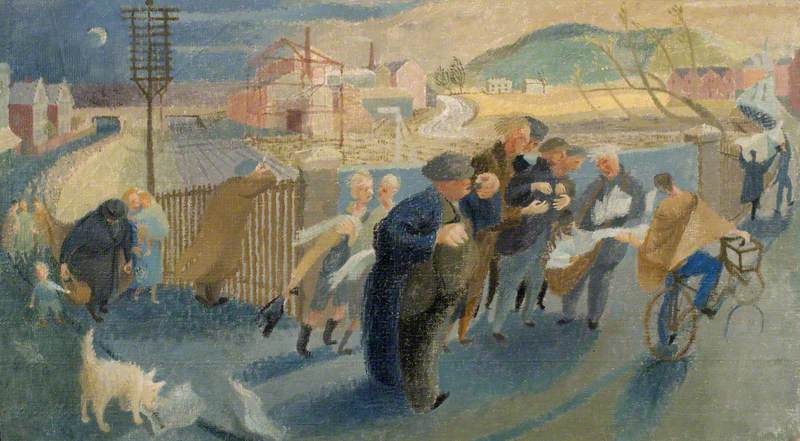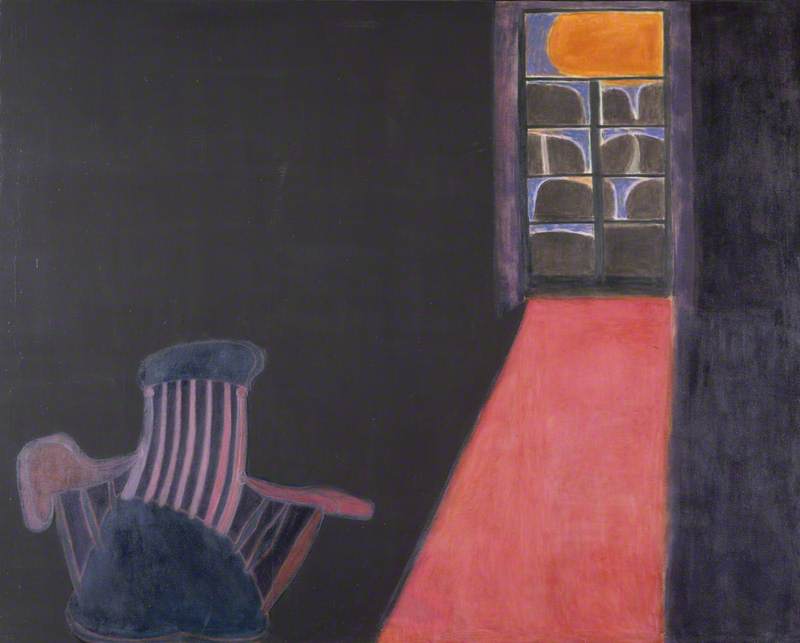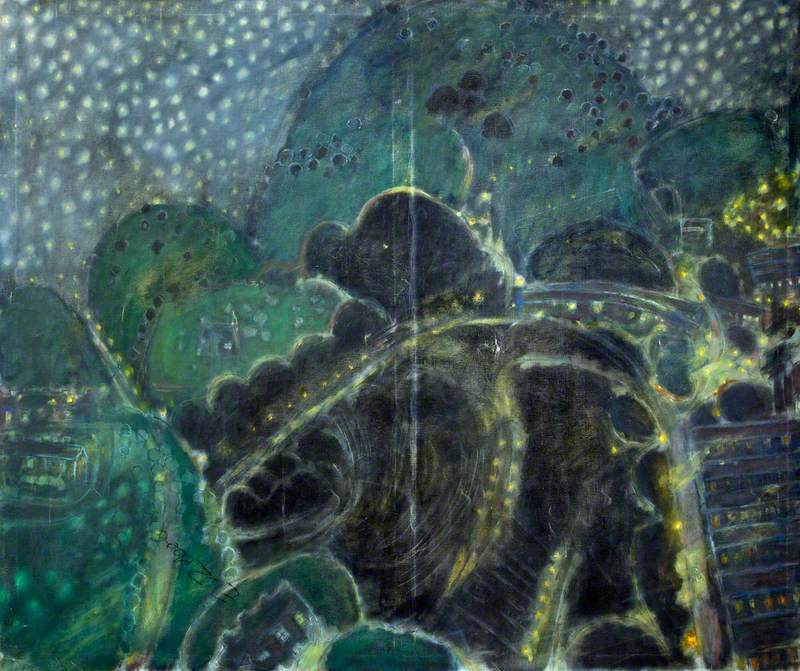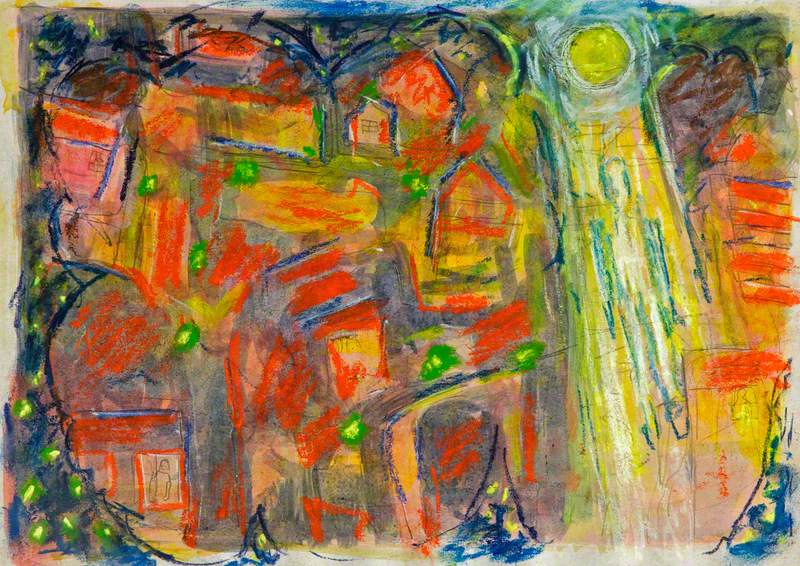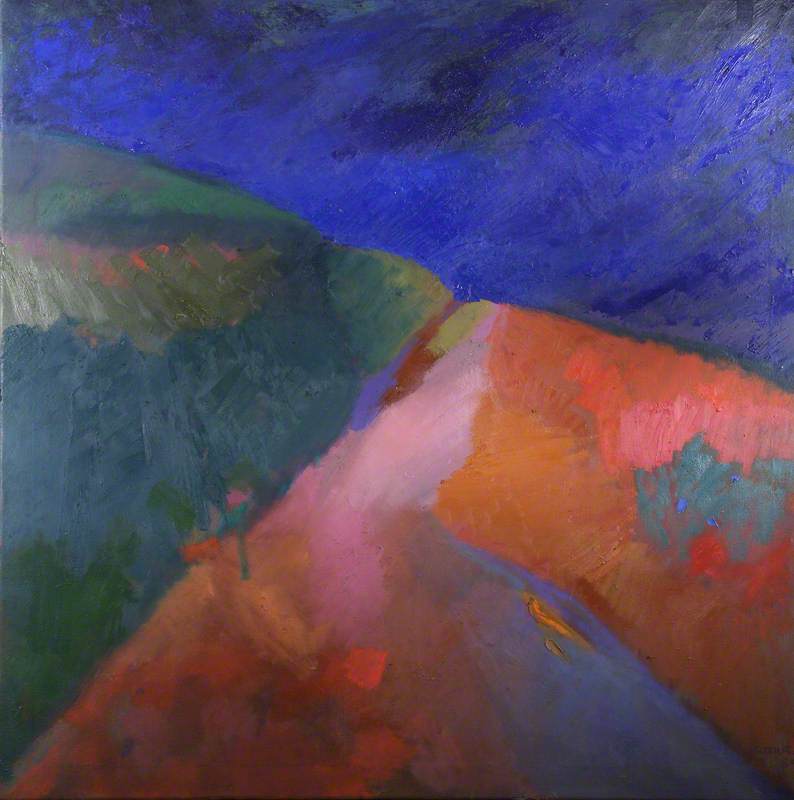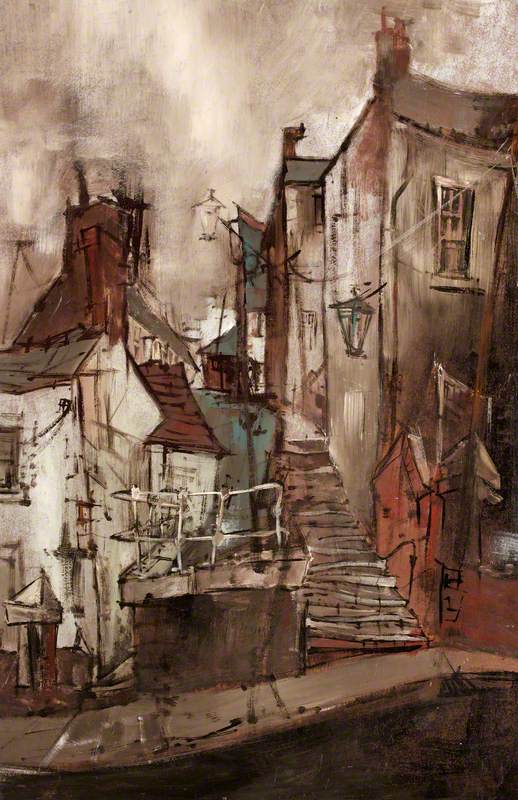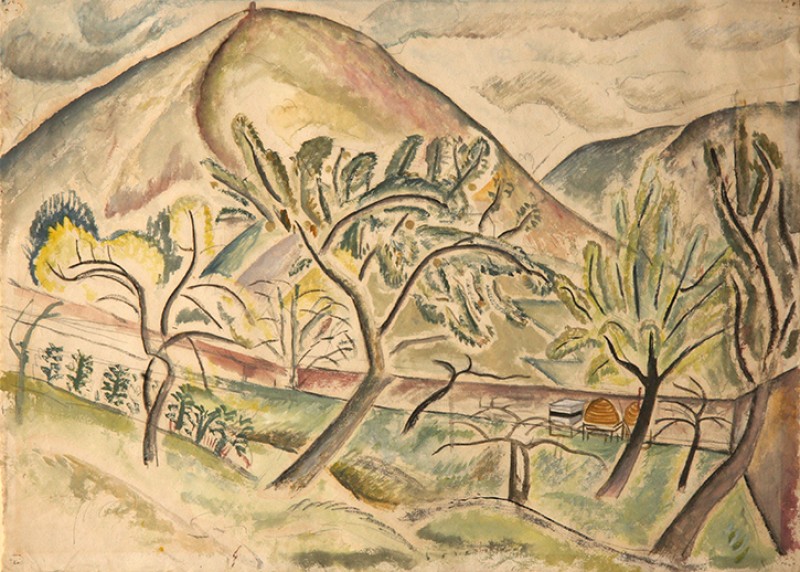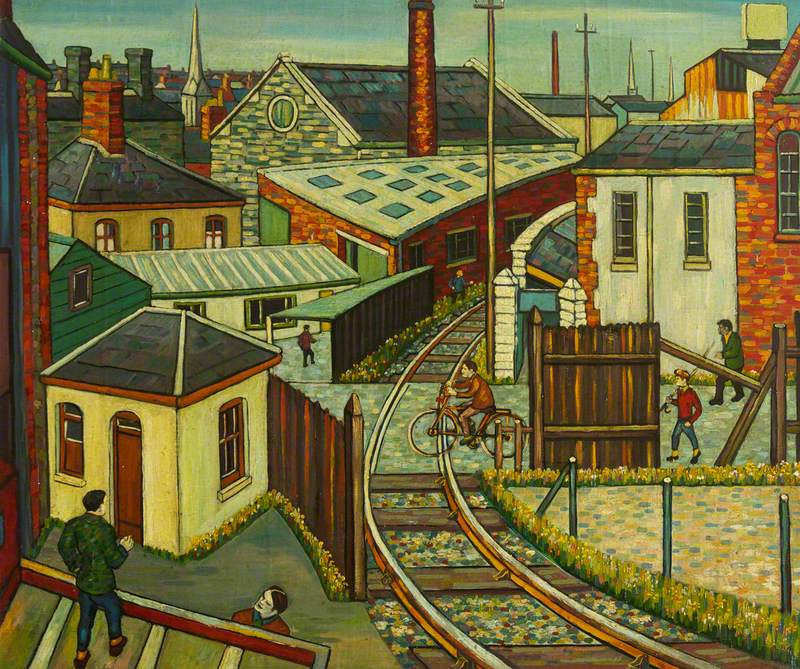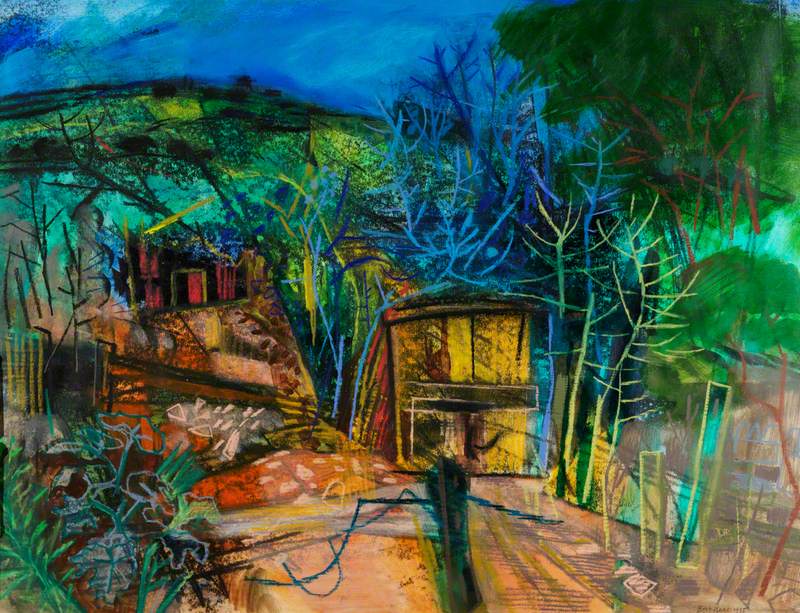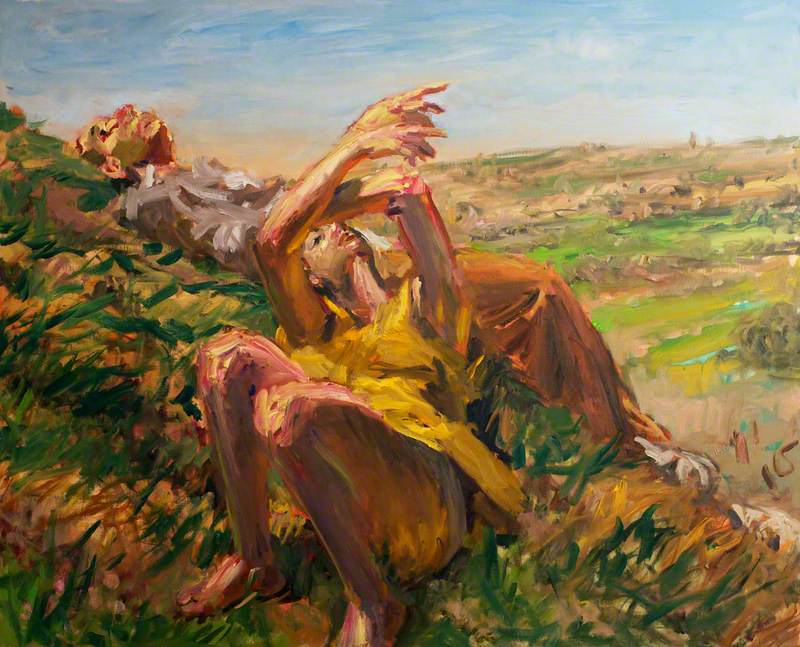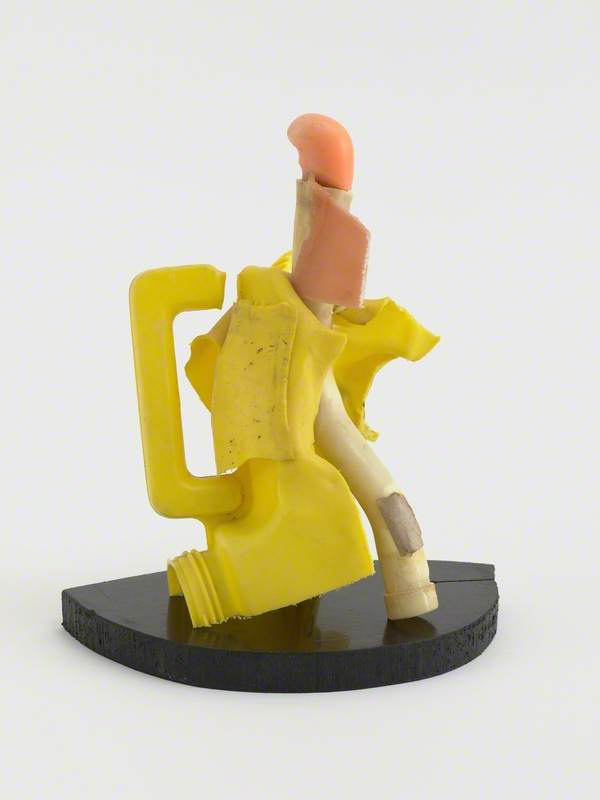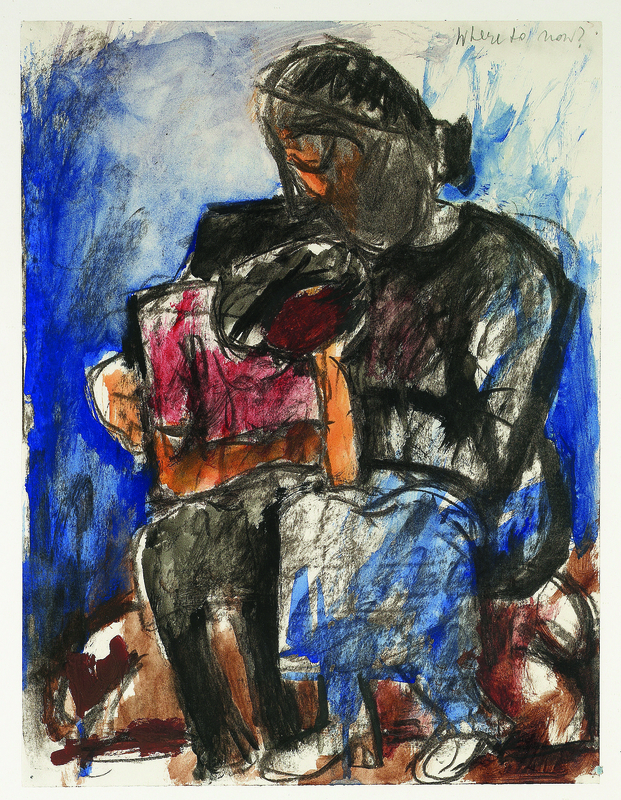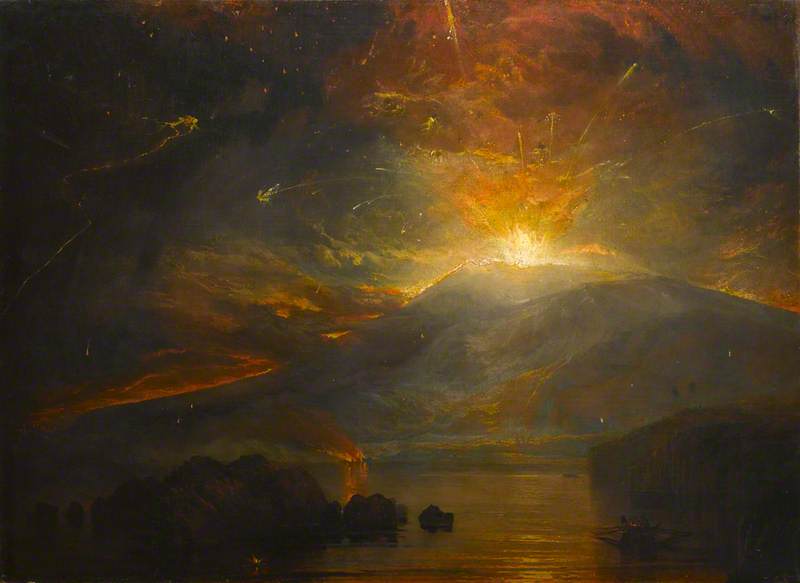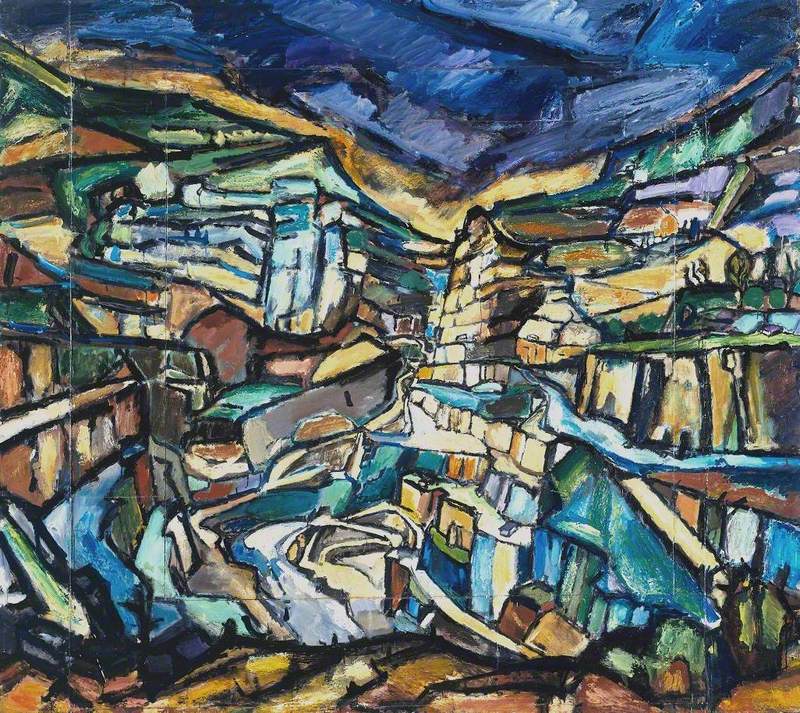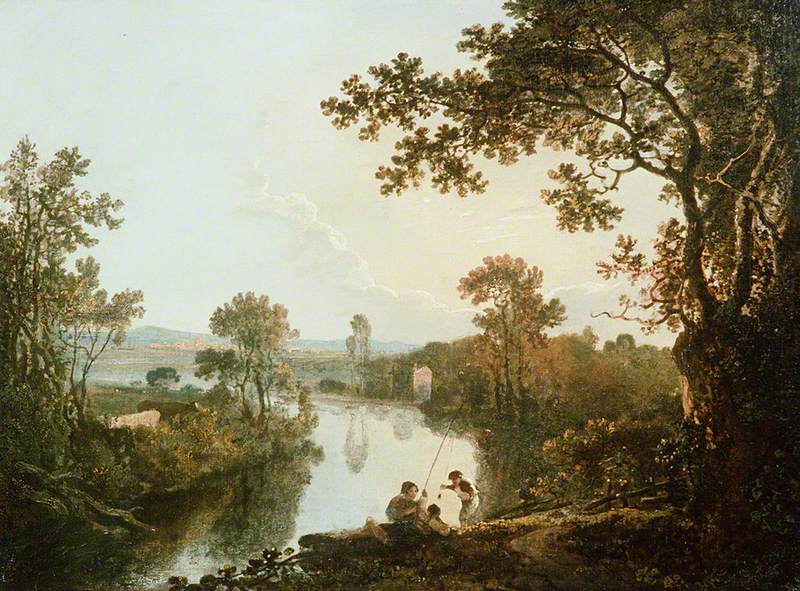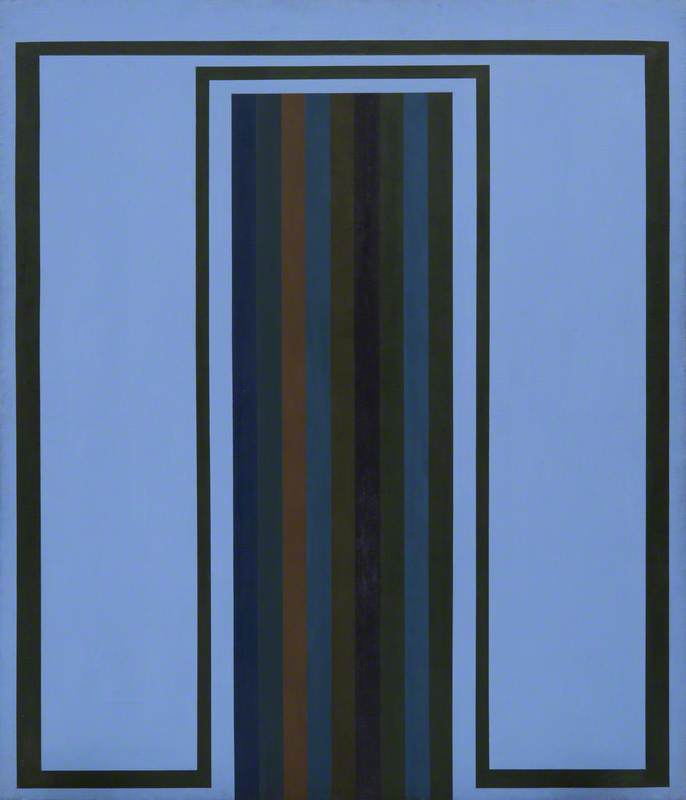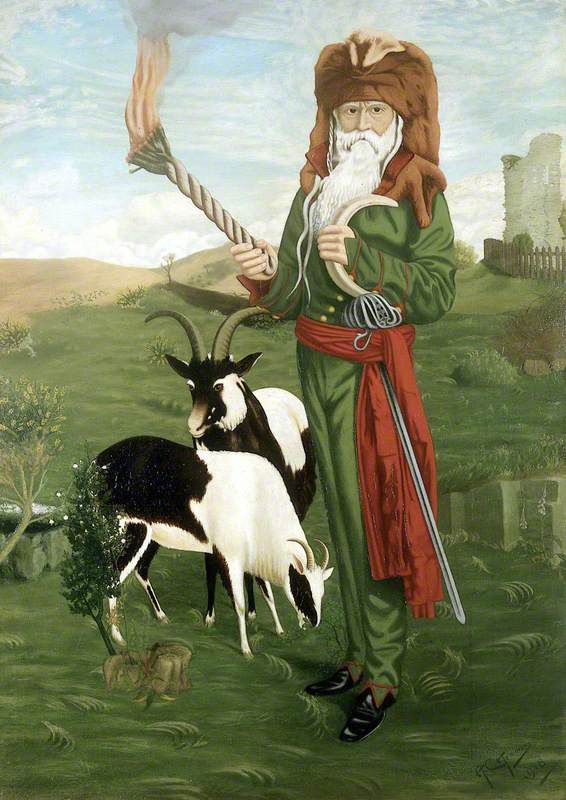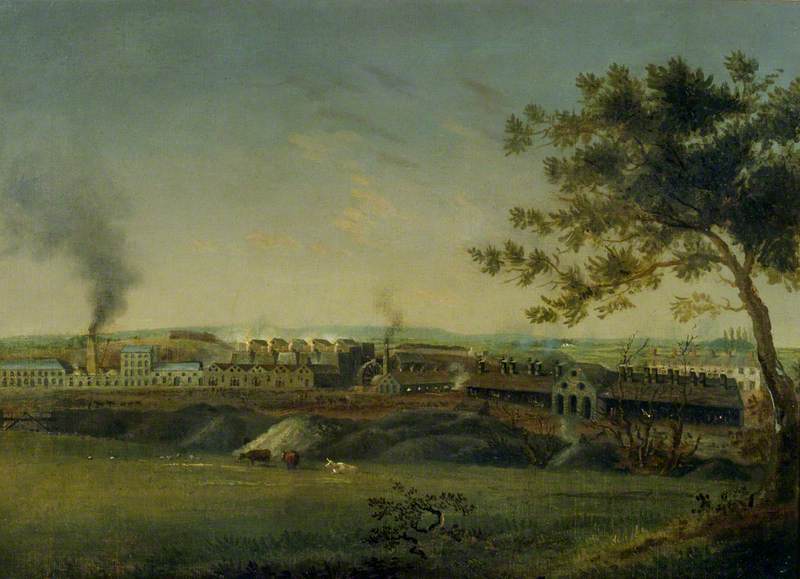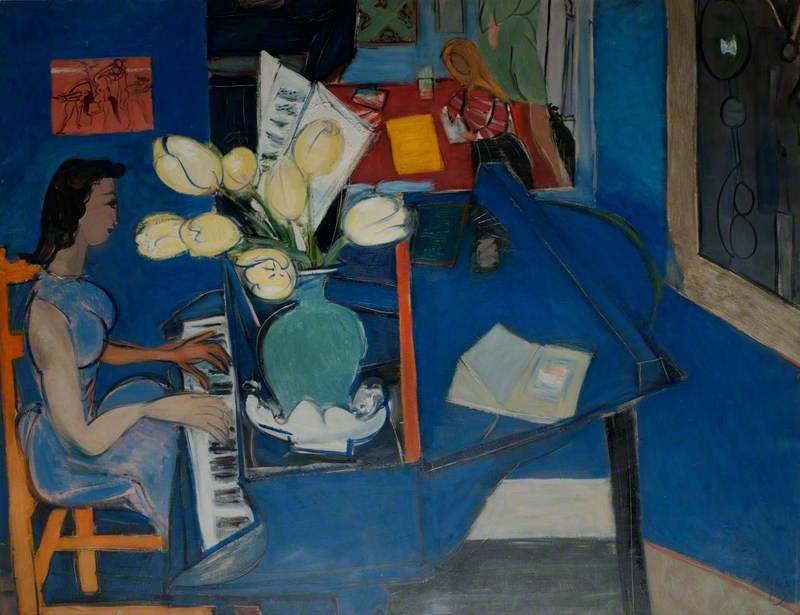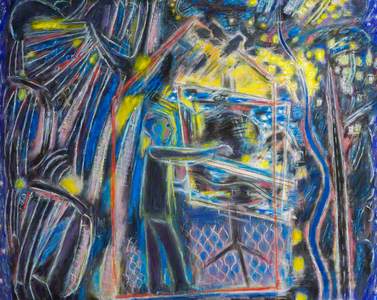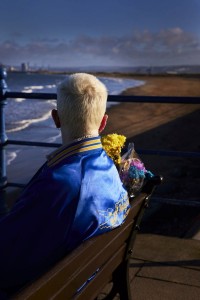In Ernest Zobole's paintings, people shrink and hills grow. To enter one of his compositions is to land somewhere strange: a place where perspective is uneasy and constantly shifting. Hills are good at that. They can conceal things or reveal them. They can allow us to see things from a different angle or to glimpse the bigger picture. The paintings are reminders that we rarely experience a place from a single vantage point. Zobole claimed it was 'the single viewpoint snapshot idea [that was] unnatural, unreal.'
Houses and Hills
early 1980s (?)
Ernest Zobole (1927–1999) 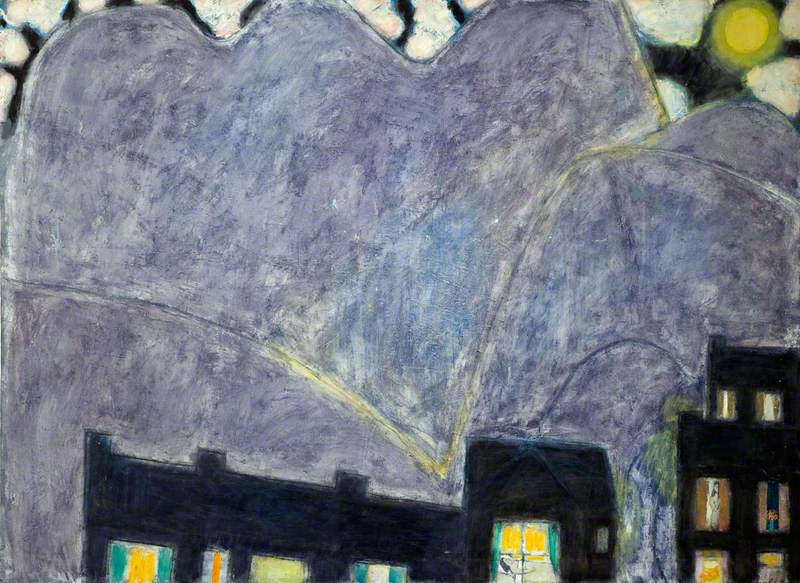
In his world the landscape is ironed out, flattened onto the canvas, and borders between outside and in are often indistinct. The works show a deep connection to place – they are almost nationalistic in their dedication to the depiction of one's hometown in all seasons and at all times of day.
Valley at Night with Figure
c.1963–1969, oil on canvas by Ernest Zobole (1927–1999), private collection 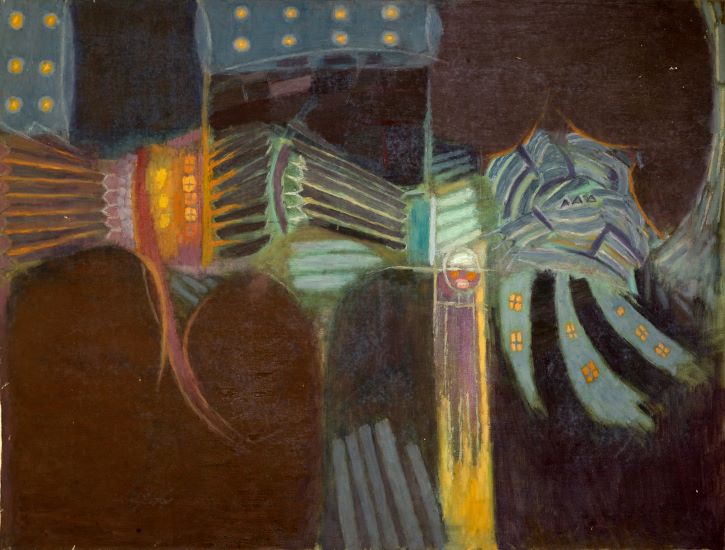
The son of Italian immigrants, Zobole was born in Ystrad in the Rhondda Valley. Save for a handful of years spent teaching on Ynys Môn, he would remain in Ystrad for most of his life and as a result, his work would become an ode to this town cradled by coal-hills. His commitment to the Rhondda was described by art historian David Fraser Jenkins, as 'a total identification, going beyond a supply of subjects.'
Valley at Night with Figure and Moon
c.1963–1969, oil on canvas by Ernest Zobole (1927–1999), private collection 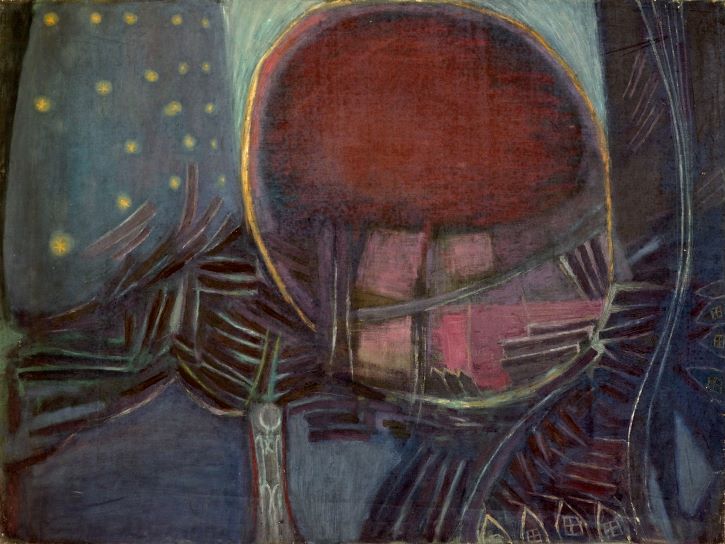
Zobole attended Cardiff Art School between 1948 and 1953, where he was part of the Rhondda Group taught by Joan Baker. Baker taught at Cardiff for nearly 40 years and was an artist whose work was deeply concerned with depicting the city life around her.
In Spring Evening, from Aberystwyth University School of Art Museum, hills appear blue and curved along the skyline. The scene is alive with a spring breeze as we witness the arrival of a train at the end of a workday. A thread of wind-blown figures weaves through the composition – heading home – each closely followed by a soft, indigo shadow thrown out by the evening light.
Baker captures a sense of the poetic within the ordinary – the crescent moon leaning against the sky and branches dancing in the breeze, the four hands near the centre of the composition not-quite-touching. We're offered the sense of a city growing, becoming a little more anonymous with each year, and an artist remaining loyal to observing its every small detail. It offers complexity and narrative in a way that defies the 'single viewpoint snapshot' that Zobole too would come to reject.
Figures with a Pram in a Street, Ystrad, c.1948–1950
c.1948–1950 (?)
Ernest Zobole (1927–1999) 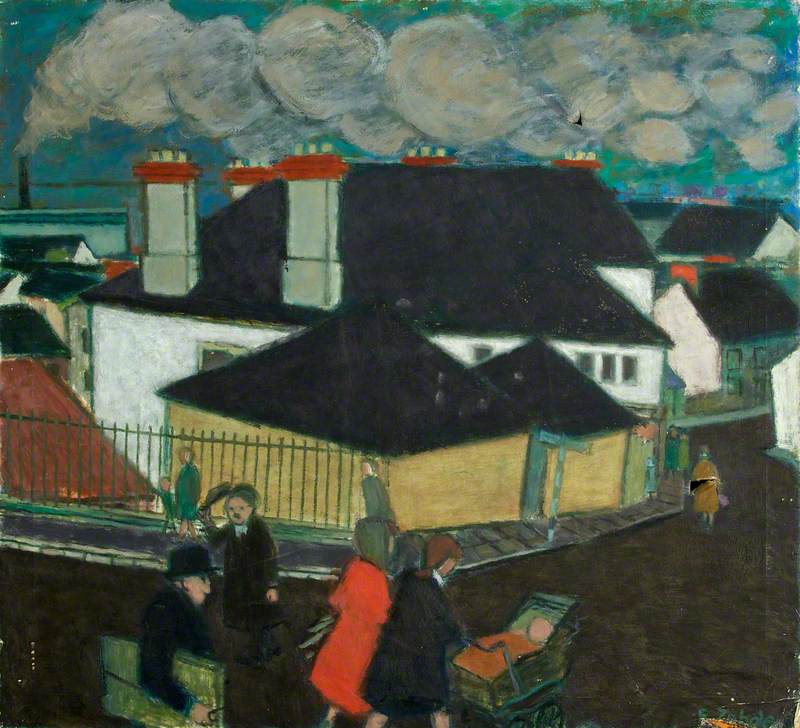
Baker's influence on Zobole is perhaps especially clear in the works made during his time at art school, such as the figurative depiction of daily life found in Figures with a Pram in a Street, Ystrad. The painting is also reminiscent of L. S. Lowry in its simplification of forms and flattened perspective. Zobole had found his subject and was beginning to develop his own distinctive language of painting that would continue to evolve during his career.
In Zobole's work, like Baker's, we find an artist seeking to record a place through their own eyes. His paintings explore the shifts of a mining town over the course of a lifetime, in which we find the only reliable constant to be the presence of the huge, curving hills surrounding it.
Sometimes the hills sit amicably at the edges of a composition. They appear, abstract and rock-like, through the windows of In A Room (Amgueddfa Cymru) as if waiting to be invited in along the path of red sunlight cast across the floor. Sometimes they glow – as though caught in hazy winter sun – sheltering a town of pitched-roof houses and winding streets. Sometimes they reach far above the edges of the canvas and slip out of sight. They are blue, black, green and pink. They grow and change, yet remain consistent and essential features in Zobole's world.
White Valley with Figures
c.1963–1969
Ernest Zobole (1927–1999) 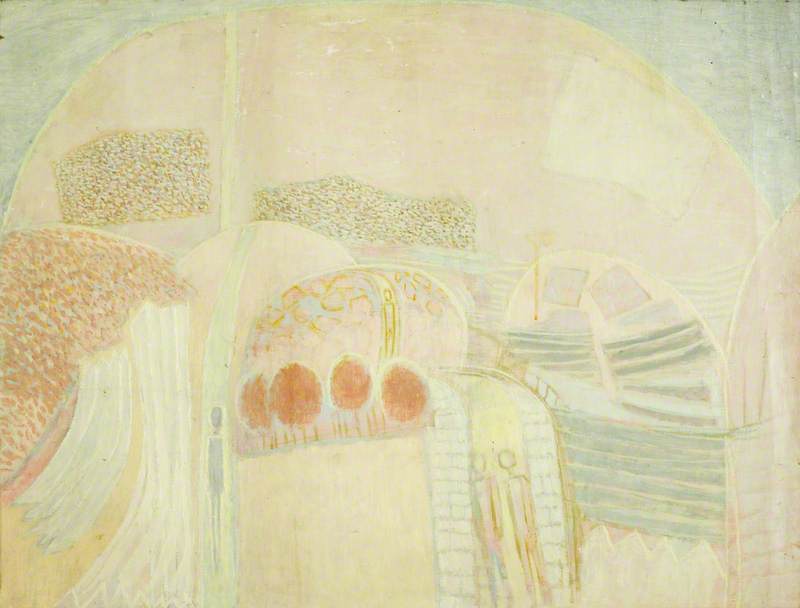
Landscape at Night with Swimming Pool
c.1973–1979 (?)
Ernest Zobole (1927–1999) 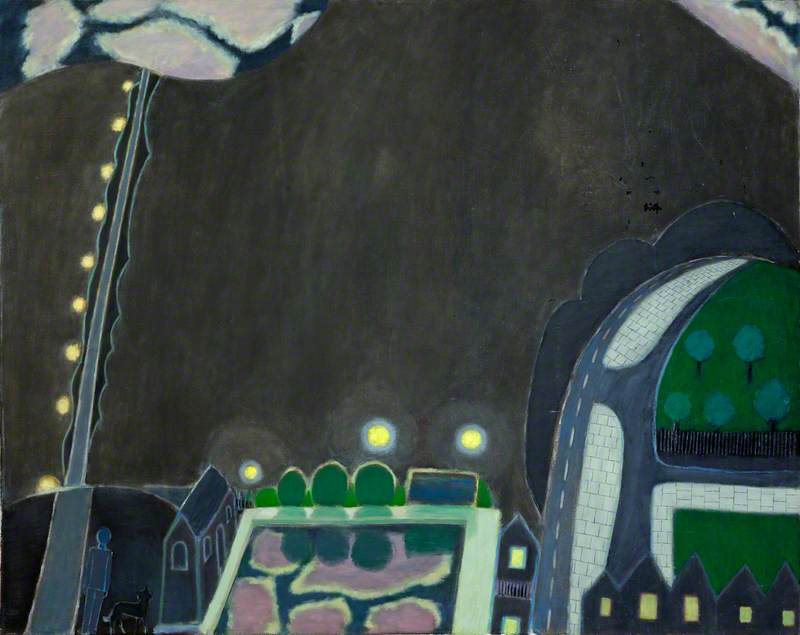
At times, the hills press in to such an extent that perhaps, as art historian Ceri Thomas suggests, we can glimpse a foreshadowing of the 1966 Aberfan disaster and the destruction that such landscapes can entail. In the Valley No. 7 depicts a landscape that is claustrophobic. Here, the hills squeeze figures into matchsticks and loom ever-closer – towards us, towards Zobole, towards the town, towards each other.
Nature is fickle and ever-changing. In an instant, the hills of a valley can transform from sheltering a place to making certain its complete destruction.
In the Valley No. 7
c.1962–1963
Ernest Zobole (1927–1999) 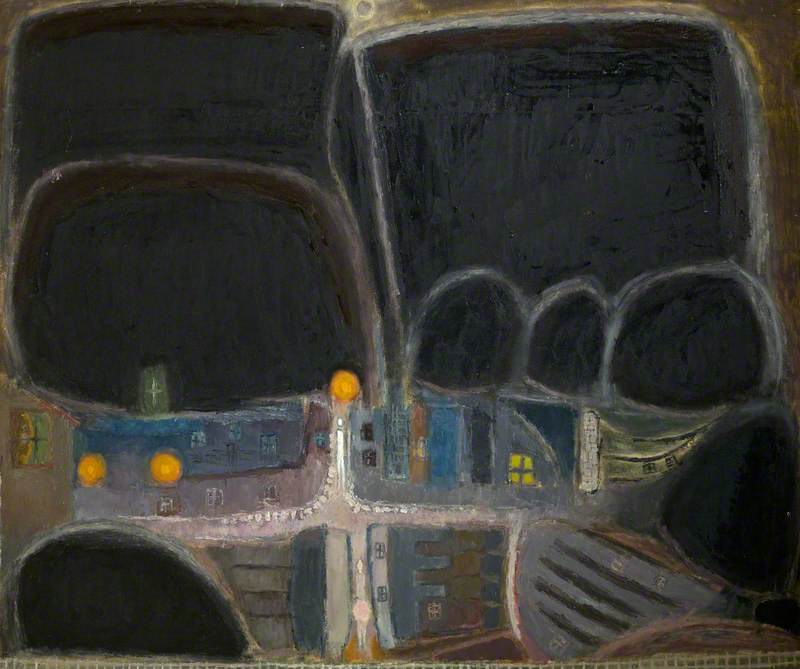
From my own experience, I wonder if living in Wales is to exist in such a balance. To encounter a dependence on and yet complete lack of control over the natural world. To attune oneself to the ghosts of these landscapes and witness the perils of living within them alongside the wonders.
I grew up between hills, though they were green slopes of a north Wales village, not the coal-heaps and quarries of the valleys. Zobole knows the difference. His landscapes are often dark and industrial, with quarry lines climbing up towards the sky.
In later work, such as Night Painting, streets are lit up by fluorescence – their scenes shimmer and dance. Streetlights cast shadows along thin pavements and skies glow with light pollution. We are met with a place that is filled with idiosyncrasies and contradictions – both rural and industrial, remote and connected, shifting yet familiar. Zobole becomes a witness to a place often overlooked, capturing it from its many different angles.
Looking Out
1986, oil on canvas by Ernest Zobole (1927–1999), private collection 
In Looking Out and Painter and Surroundings No. 1 the hills are reflected in windows and mirrors; they are broken, refracted, complicated. Still, they are always there, alongside the artist – the fragments of a painted universe repeatedly pieced together and rearranged.
Painter and Surroundings No. 1
1991
Ernest Zobole (1927–1999) 
As Meic Stephens observed in The Independent, 'it is as if he is trying to make contact with everything – the moon, the hills, the wet road, the street-lamps, the houses, the figure hurrying through the rain – and to be everywhere at the same time.' Zobole explores not just the visual aspects of a place but the experience of being entirely encompassed by it.
Ellie Evelyn Orrell, writer
This content was supported by Welsh Government funding
Many of Zobole's works are on long-term loan to University of South Wales Art Collection Museum
Further reading
Ceri Thomas, Ernest Zobole: A Life in Art, Seren, 2007
David Fraser Jenkins, Introduction, Recent Paintings by Ernest Zobole, Newport, 1986
Peter Wakelin, Art Accustomed Eyes, National Museum Wales, 2004
Peter Wakelin, 'Obituary: Ernest Zobole', The Guardian, 1999
Meic Stephens, 'Obituary: Ernest Zobole', The Independent, 1999
Peter Lord, The Tradition: A New History of Welsh Art 1400–1990, Parthian Books, 2023
